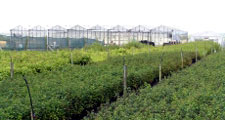Origins of Seed and Planting Stock
Background
There is evidence that in some cases varieties or ‘ecotypes’ of the same species can be better adapted to local conditions (particularly climate) than other ecotypes, or have characteristics (timing of bud burst, flowering or leaf fall) to which others species like birds and invertebrates are locally adapted.
Little is known about the importance of genetic variation for many of our native trees and shrubs. In some cases local genotypes may be the result of genetic impoverishment through isolation and inbreeding or selective felling of higher quality trees. Local genetic diversity is likely to be a more important issue for species where the modern population is largely wild than for species which are largely represented by planted (and therefore selected or imported) stock.
In order to conserve genetic diversity a precautionary approach is recommended here which involves using local plant material where possible when planting native species. Guidance on the issue for individual species is given in the pages on trees and shrubs native to County Durham.
Published Guidance
The Forestry Commission Practice Note, Using Local Stock for Planting Native Trees and Shrubs, gives guidance on the production and use of local stock for native species. It can be downloaded from their website.
Local Seed Zones
The Forestry Commission defines four broad regions of provenance in the UK which are subdivided further into local seed zones. You can view an interactive map showing the recommended local seed zones for planting in County Durham.
General Principles
- On sensitive sites – in or adjacent to ancient woodlands and other semi-natural habitats – use natural regeneration or plants grown from nearby wild populations where possible. Where this isn’t possible use plants from the appropriate FC local seed zone.
- On less sensitive sites use plants from the appropriate FC local seed zone where possible. Where material isn’t available from the same seed zone use material from the nearest adjacent zone in the same elevation band.
- For locally rare or uncommon species use only material collected from nearby wild populations.
Further Information
Flora Locale have produced a Guidance Note, Sourcing Native Flora, which can be downloaded from their website.



